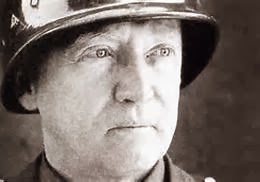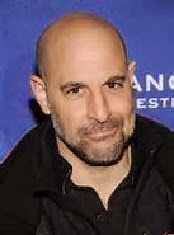Good 42º dark morning. Sunshine is predicted!
Yesterday we stayed dark and cloudy and topped at 55º.
Veterans Day.... Thank you all for your service. God Bless you!
To all Veterans on this special day of remembrance I salute you!
All the veterans I am related to:
My Dad: Leslie Laney USN WWI
Brothers-in-law: Joe Mueller USAAC WWII, Bill Plumbridge USN
Nephews: Jim and Bob Plumbridge USN
My *Jerry Maxwell, Brian Pendleton, Alex Corsoro, USMC
Friends:
USMC: *LASD ret
*Sid Heal, *Rod Johnson, *Jon Austin, Mel Nix, Lynn Crowell, *Sally Harwell, Andy Nantz, *Terry Bonyea, *Neil Ornstein, *Bill Patterson, Garry Dukes
All the Rogue Valley Marine Corps League
Navy:*LASD ret
*Joe Kirk, *Don Davies, *Lynn Helbing, *Moon Mullen, *Spike Dammer, *Ben Hunt, *Ron Wisberger, *Jim Pierce, Spencer Norman, Jim Harper, Greg Lundell, George "Gator" Hill, *Michael D Nelson, *Ollie Taylor Navy Reserve, *Dennis Slocumb, *Rich Steinhurst aka 'Steiny', *Dave Clark, *Bill Riordan, Steve Geon
Army:*LASD ret
*Dale Yellin, *Gabe Ramirez, David Perry, *Larry Tomes, *Ike Saben, *Wayne Low, *Bill Stonich
Air Force: *LASD ret
*Dan Patz, Ron Maxwell
(If there are any of you I missed, please let me know!)
Picture of the Day😊
Interesting about rubber bands..........
A rubber band (also known as an elastic band, gum band or lacky band) is a loop of rubber, usually ring or oval shaped, and commonly used to hold multiple objects together. The rubber band was patented in England on March 17, 1845, by Stephen Perry. Most rubber bands are manufactured out of natural rubber as well as for latex free rubber bands or, especially at larger sizes, an elastomer, and are sold in a variety of sizes.
Notable developments in the evolution of rubber bands began in 1923 when William H. Spencer obtained a few Goodyear inner tubes and cut the bands by hand in his basement, where he founded Alliance Rubber Company. Spencer persuaded the Akron Beacon Journal as well as the Tulsa World to try wrapping their newspapers with one of his rubber bands to prevent them from blowing across lawns. He went on to pioneer other new markets for rubber bands such as: agricultural and industrial applications and a myriad of other uses. Spencer obtained a patent on February 19, 1957, for a new "Method for Making Elastic Bands" which produced rubber bands in an Open Ring design.
Manufacturing
Most rubber, whether it is natural or synthetic, typically arrives at the manufacturing facility in large bales. Rubber bands are made by extruding the rubber into a long tube to provide its general shape. There are a number of different methods that can be applied at this point in the manufacturing process. Originally, and in some instances still today, the rubber tubes will then be placed on mandrels, curing the rubber with heat, and then slicing them across the width of the tube into little bands. This causes the tube to split into multiple sections, creating rubber bands. This is most commonly known as an "off-line" rubber extrusion process.
While other rubber products may use synthetic rubber, most rubber bands are primarily manufactured using natural rubber because of its superior elasticity.
Natural rubber originates from the latex of the rubber tree, which is acquired by tapping into the bark layers of the rubber tree. Rubber trees belong to the spurge family (Euphorbiaceae) and only survive in hot, humid tropical climates near the equator, so the majority of latex is produced in the Southeast Asian countries of Malaysia, Thailand, and Indonesia. Once the latex has been tapped and is exposed to the air, it begins to harden and become elastic, or rubbery.
A rubber band is assigned an industry-standard number based on its dimensions. The first use of rubber band size numbers can be traced back to the early 20th century. While it is difficult to pinpoint an exact date, the practice of categorizing rubber bands by size allowed to easily select the appropriate rubber band for their specific needs. Standards for the rubber band were established in the United States in 1925 by the Department of Commerce, Bureau of Standards and is the first known publication to reference rubber band size.
Generally, rubber bands are numbered from smallest to largest, width first. Thus, rubber bands numbered 8–19 are all 1⁄16 inch wide, with lengths going from 7⁄8 inch to 3+1⁄2 inches. Rubber band numbers 30–35 are for width of 1⁄8 inch, going again from shorter to longer. For even longer bands, the numbering starts over for numbers above 100, again starting at width 1⁄16 inch.
Red rubber bands
In the UK during 2004, following complaints from the public about postal carriers creating litter by discarding the rubber bands which they used to keep their mail together, the Royal Mail introduced red bands for their workers to use: it was hoped that, as the bands were easier to spot than the traditional brown ones and since only the Royal Mail used them, employees would see (and feel compelled to pick up) any red bands which they had inadvertently dropped. As of 2006, some 342 million red bands were being used per year. The Royal Mail no longer uses red rubber bands as of about 2010. The exact date is uncertain, presumably as different areas used up old stock at different rates.
From Mr. Food
If you've ever wondered what Santa drinks on his sleigh to stay warm, we've got your answer right here. Nothing says Christmas like a big pot of coffee (and presents, of course) but Santa's Coffee will have your house smelling wonderful while you enjoy time with the family!
- 8 cups hot brewed coffee
- 1/4 cup light brown sugar
- 1/4 teaspoon ground cinnamon
- 1/4 cup chocolate syrup
- 3/4 cup half-and-half
- Whipped cream for dolloping
- Cinnamon sticks for garnish
- Pour coffee into 3-quart slow cooker.
- In a small bowl, combine sugar and cinnamon. Add to slow cooker and stir until dissolved. Stir in chocolate syrup and half-and-half, cover, and heat on low until hot.
- When ready to serve, fill a mug with coffee, top with a dollop of whipped cream, and garnish with a cinnamon stick.
***For that grown-up flavor, you can add 1/4 cup coffee-flavored liqueur.
Two special birthdays today...
Nancy (Kujala) Sammons is celebrating. Happy Birthday to my high school locker partner and pal! xoxo
Us a few years ago....
And here we are in our high school annual photo.... me in the middle on top row and Nancy on the left in the bottom row....
Also celebrating is Ben Hunt (LASD ret). Happy Birthday Ben! xo
Interesting about Ben.... he told me he was born 11 minutes after 11pm on 11-11-43. He's also veteran born on Veterans Day!
Historically this date............
And births this date include...
All I know. Nuff said. Have a good Saturday. Ciao.
xo Sue Mom Bobo
Veterans Day on November 11th honors military veterans who served in the United States Armed Forces. The federal holiday coincides with Armistice Day and Remembrance Day which marks the end of World War I. These observances reflect the end of significant hostilities at the 11th hour on the 11th day of the 11th month of 1918 when the Armistice with Germany went into effect. Initially, the United States observed Armistice Day as well. However, it evolved into the current Veterans Day in 1954.
Veterans Day is not to be confused with Memorial Day or Armed Forces Day. Veterans Day celebrates all United States, military veterans. However, Memorial Day is set aside for remembering the men and women who died while serving. Additionally, Armed Forces Day recognizes the men and women who are currently serving in the United States military.
HOW TO OBSERVE
Since Veterans Day is a federally designated holiday, many businesses and schools close for the day. Additionally, employers may recognize their veteran employees through special events. Throughout the day, local, state, and federal organizations host Veterans Day ceremonies.
Non-essential federal government offices close on this holiday, including all United States Post Offices. As a result, postal workers make no deliveries. Additionally, all federal workers are paid for the holiday. However, those who are required to work, sometimes receive holiday pay in addition to their wages.
Attend a ceremony and take a veteran you know out for a meal. Organize a veteran appreciation luncheon at your work or in your community.
The United States Marine Corps customarily observes its birthday (November 10, 1775) and Veterans Day as a 96-hour liberty period.
Veterans Day Spelling
While it’s grammatically acceptable to write or print the holiday as Veteran’s Day or Veterans’ Day, the United States government declared that the attributive (no apostrophe) rather than the possessive case is the official spelling.
VETERANS DAY HISTORY
U.S. President Woodrow Wilson first proclaimed Armistice Day on November 11, 1919. At the time, he said, “To us in America, the reflections of Armistice Day will be filled with solemn pride in the heroism of those who died in the country’s service and with gratitude for the victory, both because of the thing from which it has freed us and because of the opportunity it has given America to show her sympathy with peace and justice in the councils of the nations.”
The United States Congress passed a concurrent resolution on June 4, 1926. The resolution requested that President Calvin Coolidge issue another proclamation to observe November 11th with appropriate ceremonies. A Congressional Act (52 Stat. 351; 5 U.S. Code, Sec. 87a) approved May 13, 1938, made the 11th of November in each year a legal holiday: “a day to be dedicated to the cause of world peace and to be thereafter celebrated and known as ‘Armistice Day’.
Raymond Weeks
In 1945, World War II veteran Raymond Weeks from Birmingham, Alabama, expressed an idea. Weeks proposed to expand Armistice Day to celebrate all veterans who served in the U.S. military. Weeks led a delegation to Gen. Dwight Eisenhower, who supported the idea of National Veterans Day. Then in 1947, Weeks led the first national celebration in 1947 in Alabama. Annually, the country recognized its veterans until his death in 1985. President Reagan honored him at the White House in 1982. Weeks earned the Presidential Citizenship Medal as the driving force for the national holiday. Elizabeth Dole, who prepared the briefing for President Reagan, called Weeks the “Father of Veterans Day.”
1954
U.S. Representative Ed Rees from Emporia, Kansas, presented a bill establishing the holiday through Congress. President Dwight D. Eisenhower, also from Kansas, signed the bill into law on May 26, 1954.
Congress amended this act on June 1, 1954, replacing “Armistice” with “Veterans,” and it has been known as Veterans Day since.
1971
Originally, the country observed Veterans Day on November 11th. However, starting in 1971, the Uniform Monday Holiday Act required the federal holiday to be moved. Congress scheduled the observance for the fourth Monday of October. In 1978, Congress moved it back to its original celebration on November 11th. While the legal holiday remains on November 11th, if that date happens to be on a Saturday or Sunday, then organizations that formally observe the holiday will normally be closed on the adjacent Friday or Monday, respectively.














1 comment:
Great picture of us Sue. Thank you. Always lots of info!!
Post a Comment